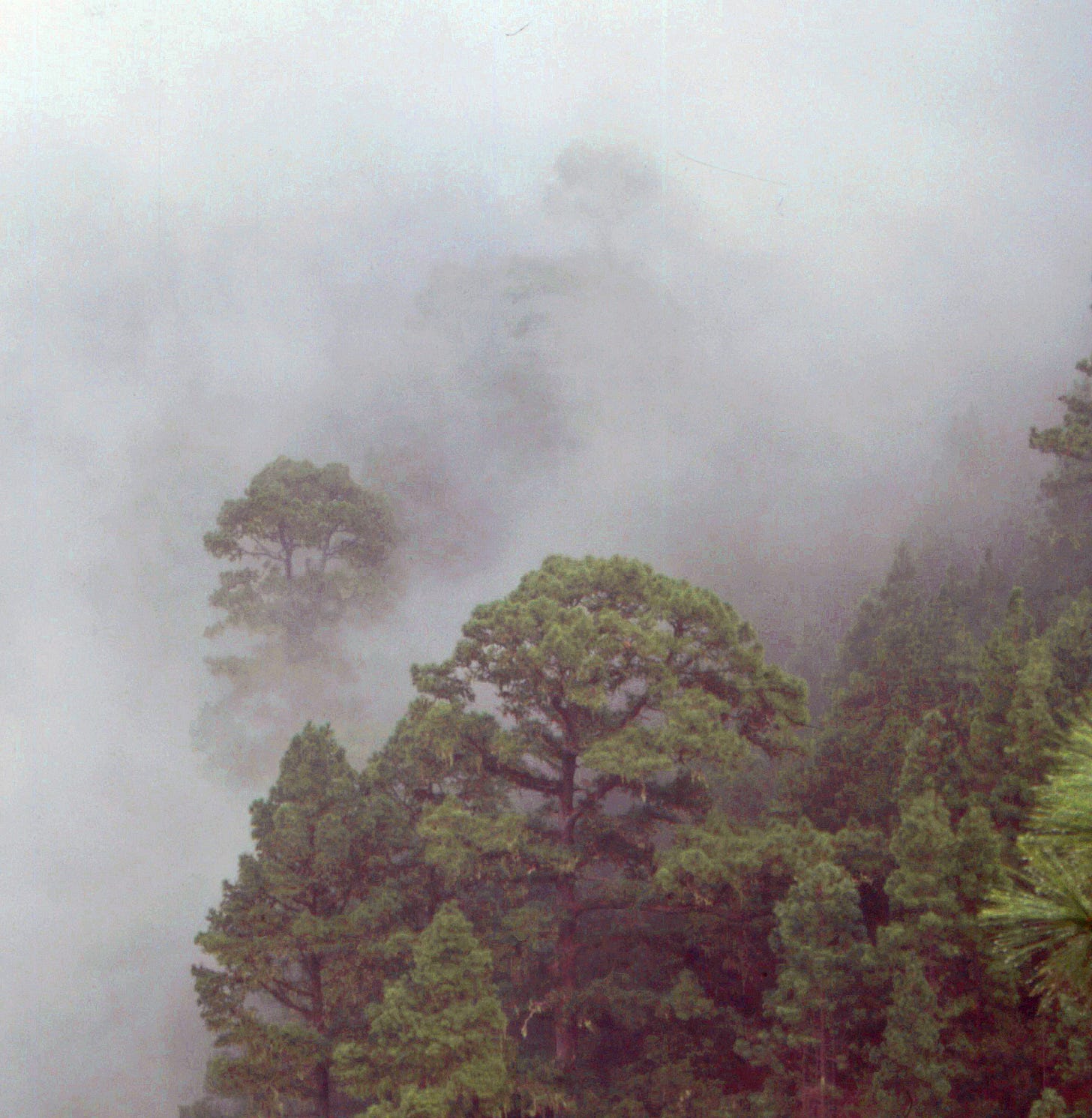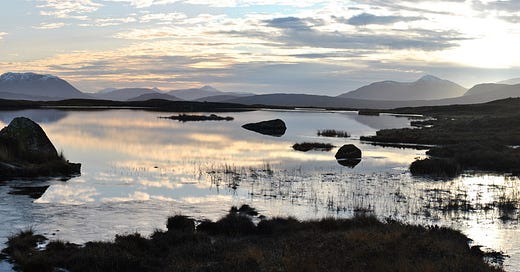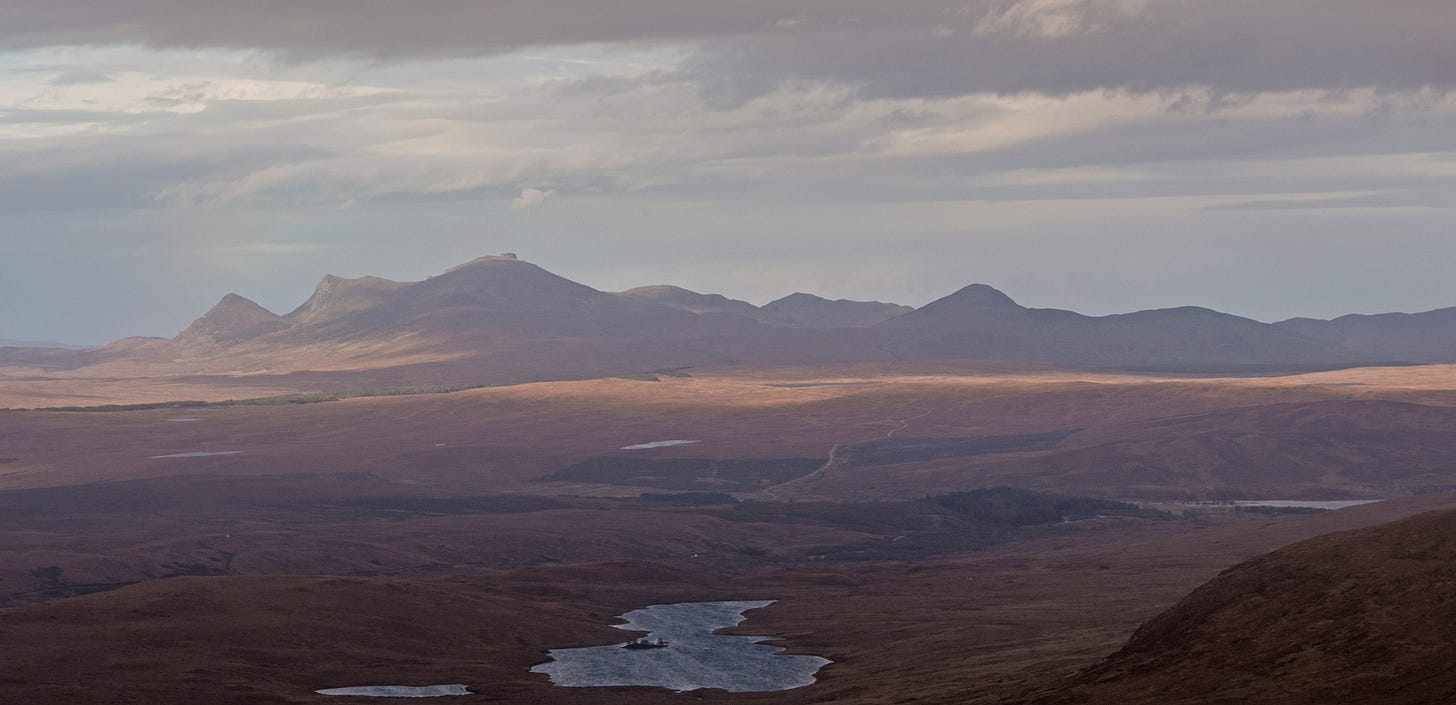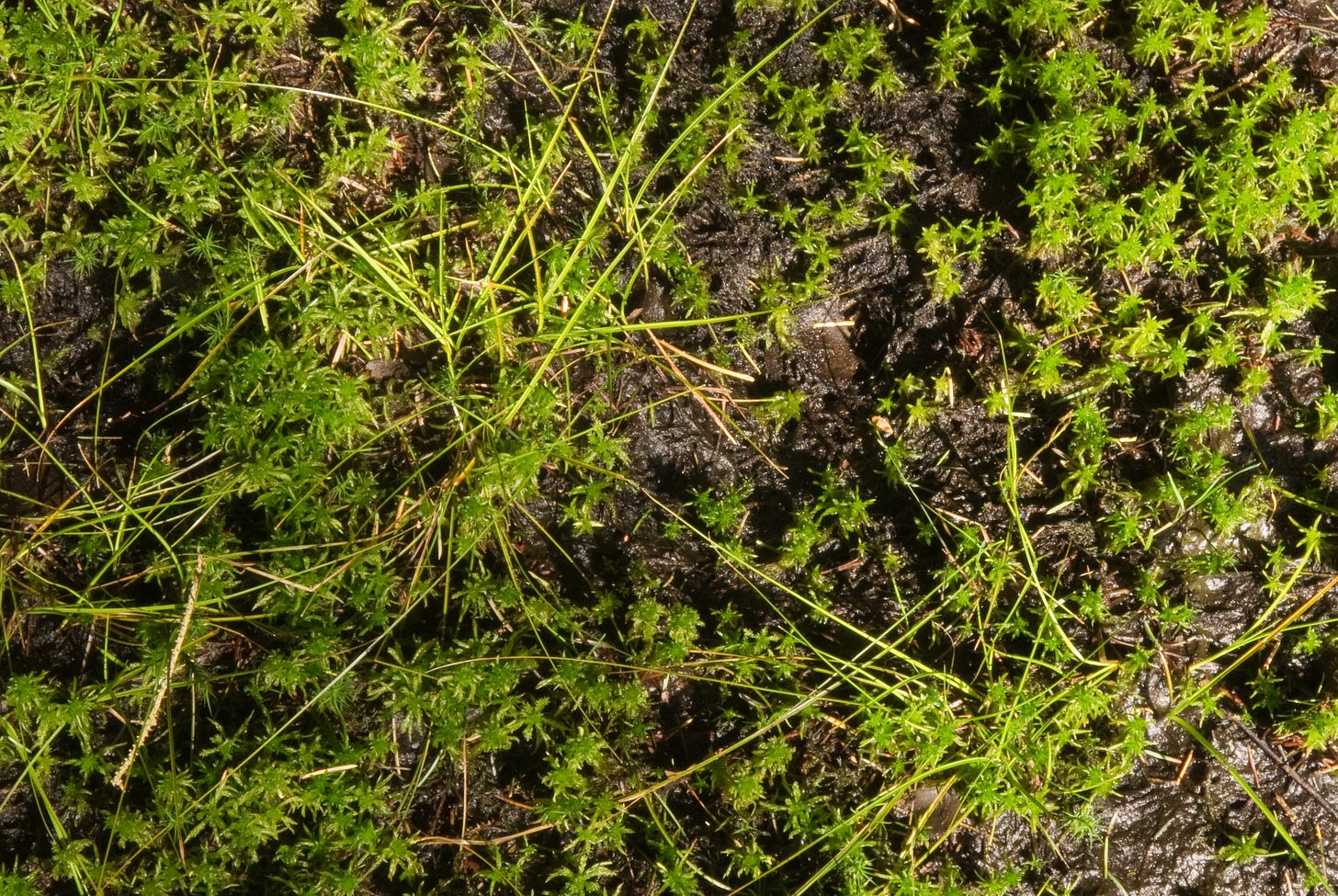Beauty and the Bog
On Friday Sutherland’s Flow Country achieved UNESCO World Heritage status [1100 wprds. 5 min
Alack, the night comes on and the bleak winds
Do sorely ruffle. For many miles about
There's scarce a bush.
King Lear II iv
Between the soft moor
And the soft sky, scarcely room
To leap or to soar. Substance crumbles, in the thin air
Moon cold or moon hot.
TS Eliot – ‘Rannoch, by Glencoe’ 1933
Just after sunset I reached Lochan Meall a’ Phuill, right in the middle of the moor. The loch edge is grey water creeping between tussocks of dismal yellow grass. The sky and the loch surface are fading to blue-grey; the bottom edge of the sky tinged brown with winter sunset, as if it were a cloth dipped to the bog and soaking up its peaty waters.1
Gaelic 'Poll' is from English 'pool' but can also mean mud or swamp: a useful indeterminate word when you can't decide whether you're about to walk into very watery ground or very peaty water. Lochan Meall a' Phuill is the lochan of the humpy-hill of the pool – so is named after itself. Gaelic is a vivid and evocative language – except sometimes when it gives up and doesn't bother.
The peatland lies level, the water reflects the cloud bands of evening. Around the rim, small distant mountains rise above the peat banks, intrusions of upright into a world of flat. The waters aren't moving, the wind isn't moving, the dismal yellow grass isn't moving. Just me, and a whole lot of midge larvae burrowing in the mud as they wait for the damp days of summer.
The rain forest of Indonesia has 30,000 separate plant species and 3000 animals, and that's before you even start in on the beetles. The world heritage of the Great Barrier Reef has 600 corals, 100 jellyfish, and 133 sorts of sharks. Even the English hay meadow with its little flowers comes in at 120 plant species, plus butterflies.
We think of ecosystems as healthy if they've got a high species count. The word 'biodiversity' builds this presumption right into the language. But there are chunks of viable and lively natural history that go the other way. Single-species sysems are even more interesting: easier to understand, but at the same time, stranger.
Tenerife has its cloud forest of laurel trees; California has its sage scrub. The Sargasso Sea has brown fucoid seaweed, loggerhead turtles and eels. Scotland has two (count them!) special ecosystems. Ecologists, have you had enough of the humming-birds of the Amazon, the strange orchids of Louisiana's swamps? Head across the Atlantic for exotic Scotland: home of the heather moor, and the brown wet wonders of the peat.

Nothing is more Scottish than a bog. The smell of the peatsmoke, the tang of the whisky, and home to Scotland's national animal the red deer, and our other national animal, the midge. Rare in global terms, the peat ecosystem covers 23% of Scotland’s land area – books about bogs are mostly about Scotland, together with the Pennine moors of England.
So Scotland's national plant should be, not the thistle, but the bog-moss Sphagnum. Sphagnum not only thrives in the soggy surroundings, but also creates them for itself to thrive in.
Peat formation, paludification, is where plants grow but fail to decompose. Blanket bog requires 1.2m of rain a year and 250 wet days. So start off in a cool wet climate, of the kind we've been putting up with for the last 10,000 years since the disappearance of the ice. Peat itself, as it builds up, isolates the soil surface from whatever mineral-rich subsoil may be below.
And so, on flat ground but also on gentle slopes with poor drainage (up to 1 in 10 or 6° gradient), the bog moss starts to spread, enveloping rocks and trees in its path …

Sphagnum is mostly water; and what’s left is pretty much pure cellulose, so its mineral needs are low. Apart from carbon dioxide out of the air, the main plant nutrient is nitrogen and its compounds. Bog moss has nitrogen-fixing cyanobacteria living in its leaves, converting the air's nitrogen into plant food. The moss is also efficient at scavenging the nitrates dissolved in rain – and so depriving any other plant that happens to be around.
Sphagnum’s sponge-like structure, is made up of water storage vessels. What stiffness it has is down to the fullness of these vessels: the same mechanism that stiffens the animal (and human) penis. Sphagnum takes up 10 times its own dry weight in water. And when it's got it, it hangs onto it. Which is how it turns drier ground at bog edge into more bog.

Once the ground is permanently waterlogged, the fungi and bacteria that break down dead plants die out themselves for lack of oxygen. Much slower anaerobic bacteria take over. But instead of nice clean carbon dioxide and water, they create acid byproducts.
Humic acid is a suite of complicated molecules: according to Britannica online, the average composition is C187H186O89N9S1. (The fact that 40% of the atoms are carbon indicates that those Cs are arranged, economically, in hexagonal 'aromatic' rings, reducing the number of spare valency arms for H, O and N, hydrogen, oxygen and nitrogen, plus that one-off S for sulphur.) We know less about how humus forms than we do about the birth of the Universe, or the far more complicated human DNA molecules. Dirt research just doesn't attract the funding...
The acidity generated by plant decomposition (humic acid) is only emphasised by the leaching away of the soluble calcium, which is not only an important plant food mineral but is also alkaline.
Once the peat is deep enough, no vegetation can gain access to the minerals of the subsoil. At this point only sphagnum and certain specialised plants can maintain existence.2 The Sphagnum not only thrives in this medium, but also goes on making it deeper and deeper.
To the point where even the United Nations has to gather round and take notice.
Two weeks ago I wrote about a crossing of Rannoch Moor. Normally, there wouldn’t be any swamp and bog related posts for another couple of months. But this time around the United Nations Educational, Scientific and Cultural Organization has rather forced my hand… The TS Eliot poem was one of my very first postings, here . Lochan Meall a’ Phuill is above Black Corries Lodge on Rannoch Moor.
Bog asphodel, pictured above, is Narthecium ossifragum, the 'bone-breaker'. Sheep reared on bog asphodel pasture do have defective skeletons. Assuming that the little yellow flowers cause the bone damage might inspire you to move them to somewhere with a bit more mineral content. So it works, on the whole; even though the asphodels are a marker for the low-calcium land, not the cause of it.
Asphodel's rootsystem features arbuscular mycorrhiza, a symbiotic fungus going back to the dawn of land plants, but discarded by most plants in happier situations.
The asphodel of the Greek Underworld is a taller version, with ghostly white flowers.









A worthwhile rail trip from Inverness with wick as terminus. Multiple unique landscapes to see by and be amazed by the flow.
I never really thought about the beauty of a monocultural landscape, but I get the point. But I wonder how many species there are in a bog. Perhaps more than we think. I went to a talk about carnivorous bog plants recently.